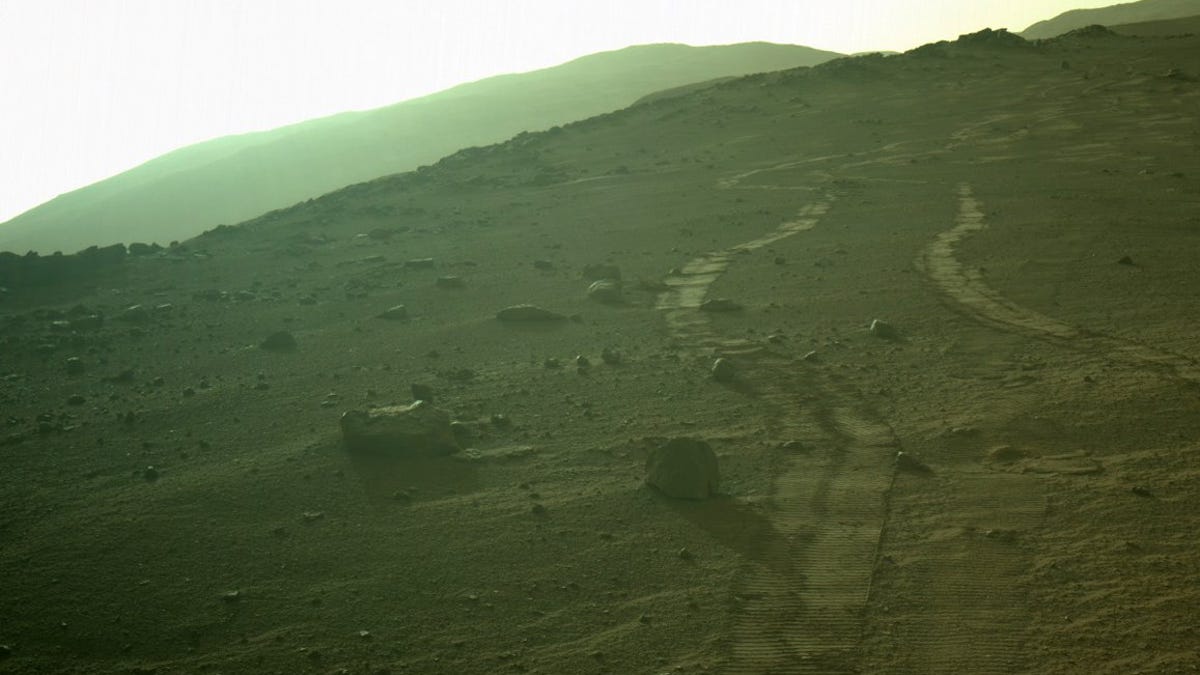NASA Perseverance rover breaks Mars record that stood for 17 years
Eat my dust.

NASA's Perseverance rover snapped a scenic view of its own tracks on Mars on Feb. 4, 2022.
Back in 2005, NASA's dearly departed Opportunity rover set one heck of a record by driving 722 feet (220 meters) in a single day. At the time, NASA called it a "likely long-standing" record. And stand it did. Until the Perseverance rover toppled the record last week.
NASA JPL highlighted the new achievement in a tweet on Monday, saying, "She achieved the longest drive in a single sol by a Martian rover (the previous record had been held by Opportunity for nearly 17 years) and surpassed her own record of longest AutoNav drive." A "sol" on Mars is about 24 hours and 40 minutes long.
Perseverance is a road-tripping beast, and a lot of that is due to its advanced auto navigation system that lets the rover make its own decisions while driving without the need for a human to give it exact directions.
The rover team dropped a few more details on the new record with a tweet on Feb. 5 saying, "Just set a new Martian record of 243.3 meters, and then yesterday, another: 245.76 meters." That longer distance works out to about 806 feet. That might not sound like an epic journey, but keep in mind Perseverance is traveling across the dusty, rock-strewn Jezero Crater.
NASA shared a view of the rover looking back at its own wheel tracks, and you can see how it has to work with challenging terrain and large rocks. As the Curiosity rover knows, Martian rocks can hurt.
According to NASA, AutoNav could allow the rover to hit a top speed of 393 feet (120 meters) per hour. Compare that to the Curiosity, which is kitted out with an earlier AutoNav system that allows it to cover roughly 66 feet (20 meters) per hour. That means Percy still has some breathing room to break its own record. As NASA said, "Places to go, rocks to see!"

